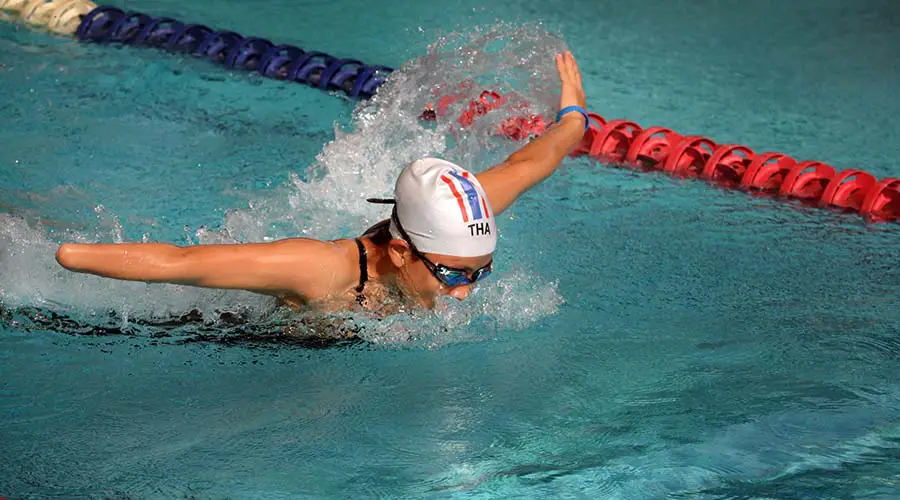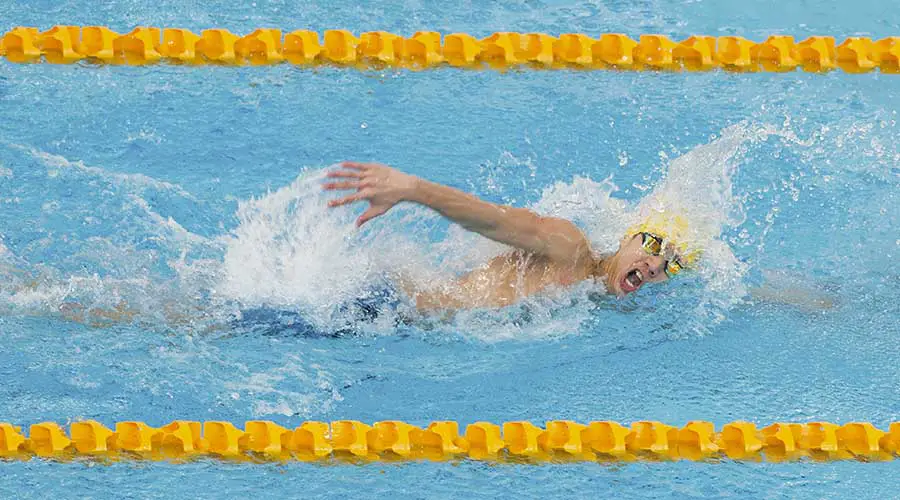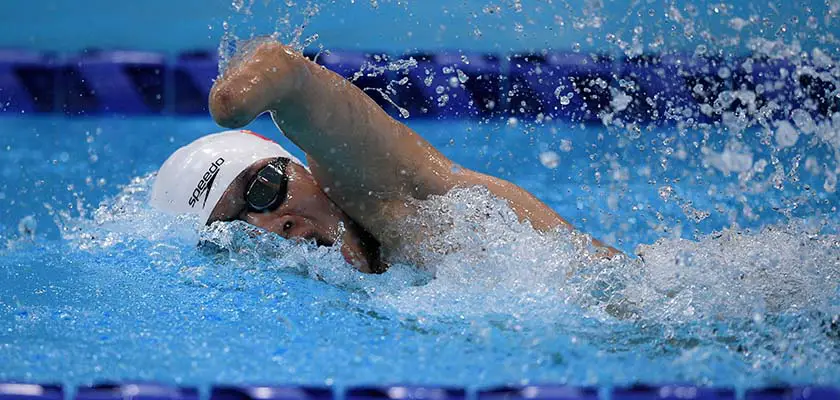Paralympic swimming is a very popular sport with more and more fans. We’ve already put together a complete guide to the rules, and now we’re introducing you to all the paralympic swimming disciplines, so that you don’t have any doubts.
Paralympic swimming offers competitive opportunities for athletes with a variety of disabilities, adapting the principles and techniques of conventional swimming to enable swimmers to overcome challenges and reach their full potential in the aquatic environment.
With various disciplines, the sport in question acts as an inclusive platform for athletes to demonstrate skill, technique and determination.
Participate in our free WhatsApp community and receive daily tips, news and trivia from over 50 sports! Click here to join.
Paralympic swimming disciplines
Each of the paralympic swimming disciplines can include a variety of events of different distances and swimming styles, providing a wide range of competition opportunities for athletes. Take a look at the possibilities:
- Freestyle
- Backstroke
- Breaststroke
- Butterfly
- Medley
- Medley by team
Next, we’ll talk about each sport and its respective rules and particularities.

Freestyle swimming
Freestyle swimming is one of the most popular paralympic swimming disciplines. Swimmers can use any swimming style they wish to cover the distance of the race, with the crawl being the most common style due to its efficiency and speed.
In the paralympic freestyle swimming competition, the athletes perform an alternating forward and backward movement of the arms, accompanied by a constant kicking of the legs.
The arm in front extends forward, while the other arm is brought back in an underwater pull.
Swimmers can breathe with each stroke, turning their head to the side to breathe, or adopt a bilateral breathing technique, alternating sides when breathing.
Backstroke
During the backstroke, the athlete alternates strokes with their arms forward and backward. While one arm is extended forward out of the water, the other arm is brought back in an underwater pull. The arms alternate in this continuous movement, propelling the swimmer forward.
The legs move up and down rhythmically. The purpose of the kick is to help propel the swimmer and maintain the body’s horizontal position in the water.
The swimmer remains on their back throughout the race, keeping their body aligned on the surface of the water. Any turning of the body forward is considered an infraction.
Breaststroke
Breaststroke requires a simultaneous arm stroke accompanied by a scissor kick.
In this discipline, the arms are brought out of the water in a circular forward movement, followed by a pull towards the body and a recovery to the starting position. The stroke creates momentum for the swimmer to move forward.
The breaststroke leg kick is scissor-shaped, with the legs moving outwards and inwards in an opening and closing motion. The swimmer flexes the knees and brings the heels towards the buttocks before pushing the legs out and back, generating propulsion.
The swimmer must remain in a horizontal position throughout the race, keeping their body aligned on the surface of the water.
Butterfly swimming
The butterfly stroke in Paralympic swimming follows a wave stroke with the arms forward and back, accompanied by a wave leg kick.
In the stroke, both arms move in sync. The arms are brought out of the water in a circular forward movement, followed by a powerful pull towards the body. During the recovery, the arms are brought out of the water and forward again in a movement above the surface of the water, creating a characteristic wave.
The legs move up and down rhythmically. The movement of the legs accompanies the movement of the arms, generating propulsion and helping to maintain the rhythm of the stroke.
Medley Individual
The individual medley is an event that combines the four swimming styles. Each swimmer must swim a part of the race in each of these styles: they start by swimming the butterfly, then switch to the backstroke, then the breaststroke and finally finish with the freestyle.
It is one of the most challenging and complete events, as it requires swimmers to be proficient in all four swimming styles. It requires a variety of technical skills, strength and physical endurance.
Team Medley
In the team medley, each team is made up of four swimmers and each of them is responsible for swimming one leg of the race in a specific style. The order is as follows: backstroke, breaststroke, butterfly and freestyle.
The first athlete on the team swims the first leg of the race, usually 100 meters, backstroke style. He dives off the edge of the pool and swims the designated distance, touching the wall at the end of his leg to indicate that he has completed his part.

After the first swimmer completes his turn, the second swimmer enters the pool to swim the next leg, usually also 100 meters, breaststroke style. He touches the wall at the end to indicate that he has completed his part.
Then the third swimmer takes over the pool to swim the third leg, usually 100 meters, in butterfly style. They complete the butterfly and touch the wall at the end to indicate that they have finished.
Finally, the fourth swimmer, who is usually the fastest on the team, swims the last leg of the race, also 100 meters, in the freestyle.
The team that completes the race first, touching the wall after the last leg of the race, is declared the winner.
Did you enjoy learning about all the modalities of paralympic swimming? Then stay on our website and enjoy similar content:



